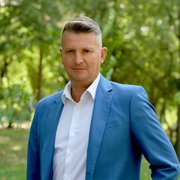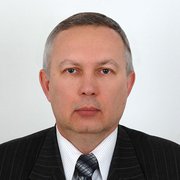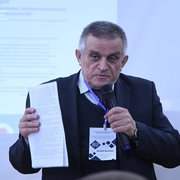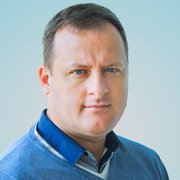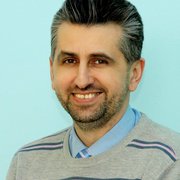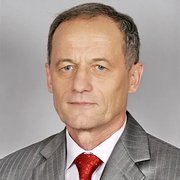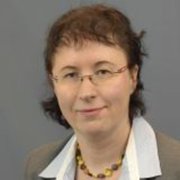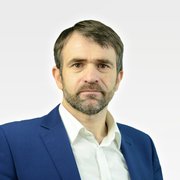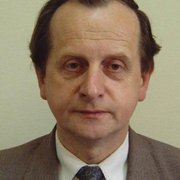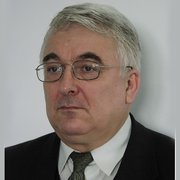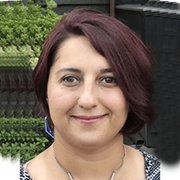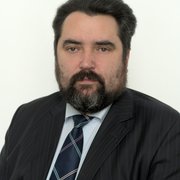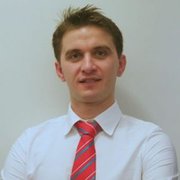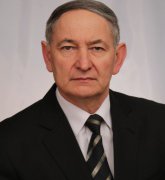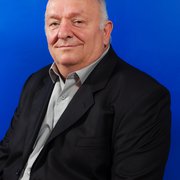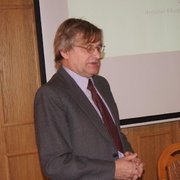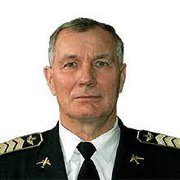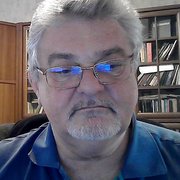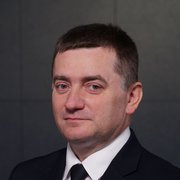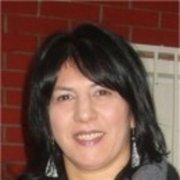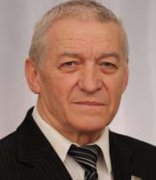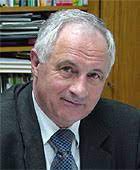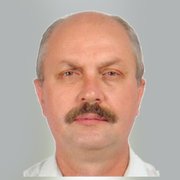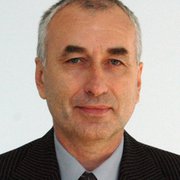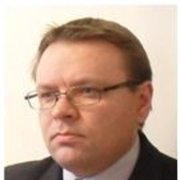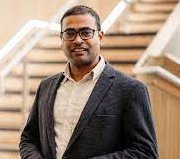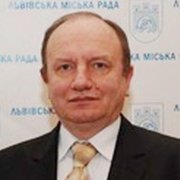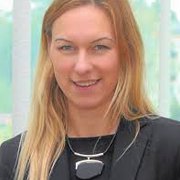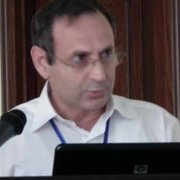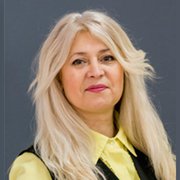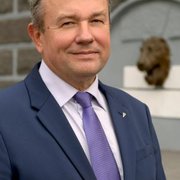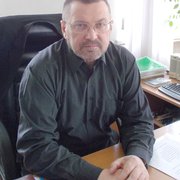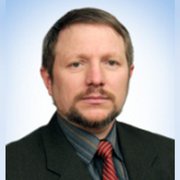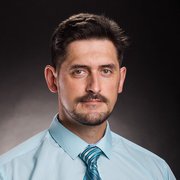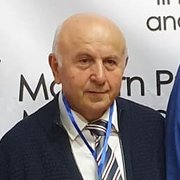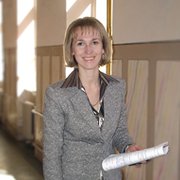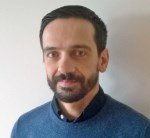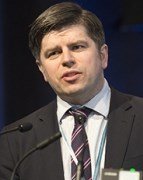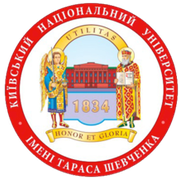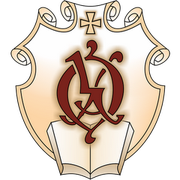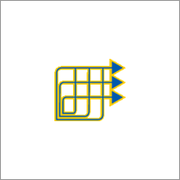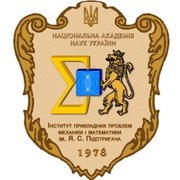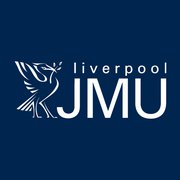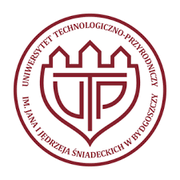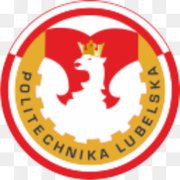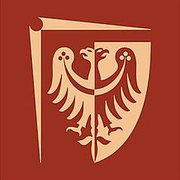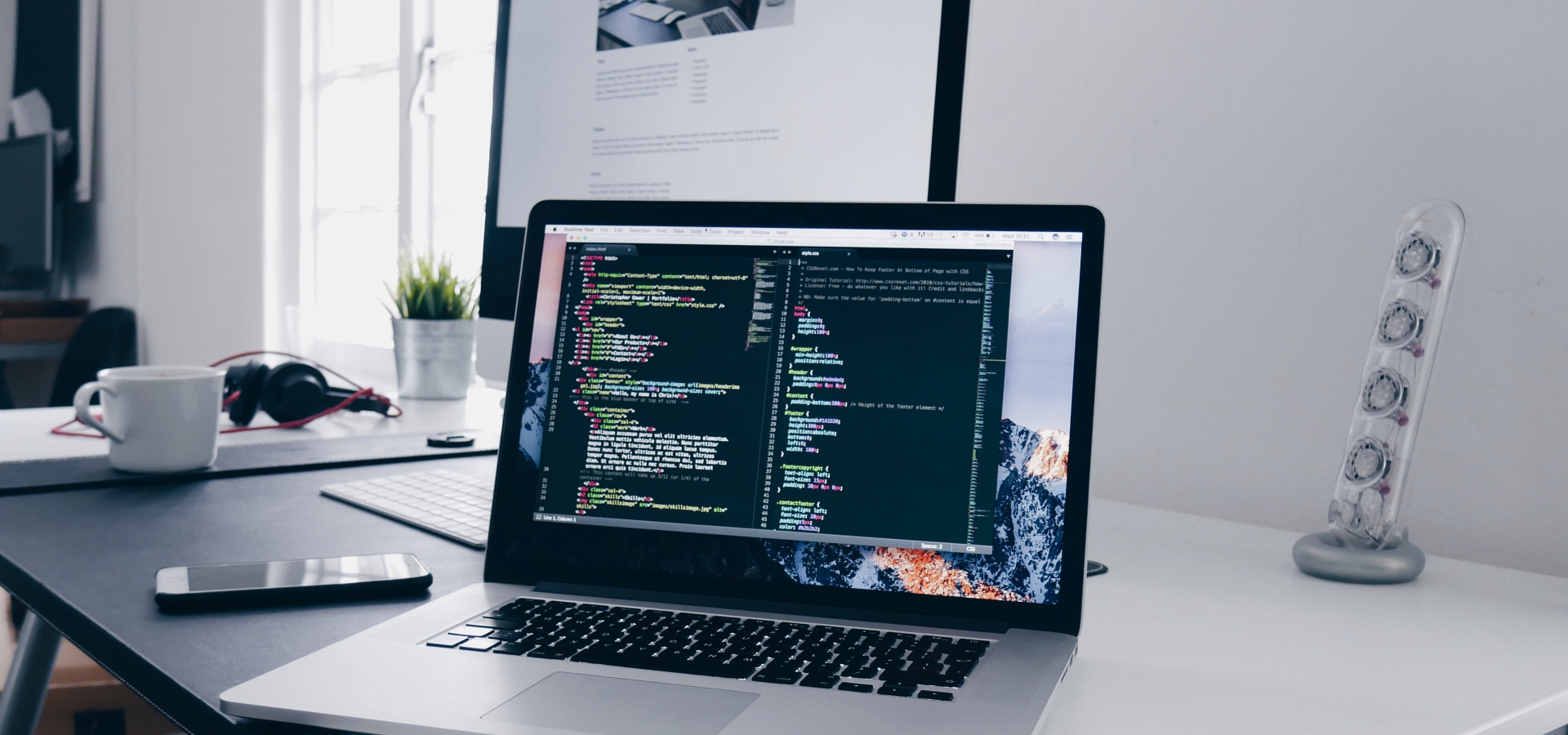
Computational & Information Technologies for Control & Modeling (CITCM 2023)
Important dates:
September 15, 2023
Deadline for paper submission
October 15, 2023
Notification of pre-acceptance, peer reviewers commentsOctober 30, 2023
Camera-ready submissionNovember 2, 2023
Notification of acceptance3rd International Workshop on Computational & Information Technologies for Control & Modeling (CITCM 2023)
co-located with VI International scientific-practical conference on Modeling, Control and Information Technology (MCIT 2023)
Date: 10 November 2023Venue: 11, Soborna Street, Rivne, Ukraine, National University of Water and Environmental Engineering (conference room)
Time: 10:00
English is the official language of CITCM 2023.
Suggested topics include the following research areas:
- Mathematical and computer modeling of objects and processes.
- Computational methods.
- Robotics, automation and control.
- Internet of Things (IoT) and artificial intelligence.
- Software development.
- Smart grids and smart consumers.
- Information Technology.
The 3rd International Workshop on Computational & Information Technologies for Control & Modeling (CITCM 2023) will be held in Rivne, str. Soborna, 11, Building No. 1 of the National University of Water and Environmental Engineering, but depending on the military situation and the decisions of the Government of Ukraine, the face-to-face meeting may be canceled or postponed. In this case, this event will be held remotely, in the format of video conferences, using the Zoom platform, ensuring the safety of all participants.
The papers which will not be presented at the workshop shall not be submitted to publication!
• 10:25 - 10:40: Iron Coagulation Optimization During Water Treatment Using Artificial Intelligence Tools by Andriy Safonyk and Vladyslav Danchenkov. In this research, artificial intelligence (AI) tools are applied to optimize iron coagulation during water treatment processes. Through thorough data analysis and the implementation of AI algorithms, the study seeks to refine iron detection methods, ultimately enhancing the efficiency of water treatment systems. The findings contribute to advancements in water treatment technology, offering sustainable solutions for improving water quality and resource management.
• 10:40 - 10:55: Simulation of Multiport Hetero-Associative Memory (MPHAM) Based on Equivalent Models Implemented on Matrix-Matrix Multipliers by Vladimir Krasilenko, Illya Chikov, Diana Nikitovich and Serhii Shatnyi. This paper explores the simulation of Multiport Hetero-Associative Memory (MPHAM) using equivalent models implemented on matrix-matrix multipliers. By leveraging simulation techniques and mathematical modeling, the research aims to advance associative information processing systems. The study's results provide insights into hardware support for memory systems, with potential applications in pattern recognition and artificial intelligence.
• 10:55 - 11:10: Usage of Information Dashboards in Smart Cities by Oleh Palka and Lesia Dmytrotsa. Focusing on smart city initiatives, this research investigates the utilization of information dashboards to monitor key performance indicators (KPIs). By analyzing the role of information dashboards in urban governance, the study offers insights into effective decision-making processes. The findings contribute to the development of smart city architectures, fostering sustainable and efficient urban environments.
• 11:10-11:25: Intelligent Carbon Dioxide Monitoring in Smart Home System with Nondispersive Infrared Sensors by Arsenii Zyma, Oleh Berest and Viacheslav Moskalenko. Within the realm of smart home systems, this study examines intelligent carbon dioxide monitoring using nondispersive infrared (NDIR) sensors. By evaluating various monitoring methods, the research addresses the critical need for indoor air quality management. The findings provide valuable insights for optimizing smart home environments, enhancing energy efficiency, and ensuring occupant comfort.
• 11:25-11:40: Determining Job Ads Category Using AWS Machine Learning Cloud Services by Vitalii Pavliuk, Volodymyr Drevetskyi and Yuriy Turbal. This research explores the automatic categorization of job advertisements using Amazon Web Services (AWS) machine learning cloud services. By harnessing cloud technologies, the study aims to streamline job ad management processes, offering practical solutions for talent acquisition and recruitment. The findings contribute to advancements in human resource management practices and automation.
• 11:10-11:25: Cross-Platform Application for NFT Tokens by Olena Hladka, Ivan Karpovich, Mykhailo Opanasiuk and Viktor Zhukovskyy. In this study, a cross-platform application for managing Non-Fungible Tokens (NFTs) is developed, facilitating token creation, storage, and trading. By providing a seamless NFT marketplace experience, the application contributes to the ongoing development of decentralized digital asset ecosystems. The research findings offer insights into secure and efficient NFT token management, fostering innovation in blockchain technology applications.
• 11:25-11:40: Approach to Predicting Spread of COVID-19 in Ternopil Region by Vasyl Martsenyuk, Mykhaylo Andreychyn, Andriy Sverstiuk, Oksana Bahrii-Zaiats, Volodumur Panychev and Svitlana Nykytyuk. This study presents an innovative approach to predicting the spread of COVID-19 in the Ternopil region, employing both linear and nonlinear differential equation models. By integrating trend lines and mathematical models, the research offers insights into forecasting infectious disease dynamics and recovery rates. The study's outcomes provide valuable tools for public health preparedness and response strategies, aiding in epidemic control and management in the region.
• 11:40-11:55: Requirements Engineering Issues and Challenges in Ukrainian Agile-projects by Roman Kruk and Nataliia Zhukovska. This research delves into the complexities and challenges of requirements engineering in Ukrainian Agile projects. Through a comprehensive review of scholarly studies and survey data from the IT community, the study identifies current issues impacting project outcomes. The findings shed light on the unique challenges faced in Agile environments, paving the way for future research and enhancing understanding of requirements engineering practices in Ukrainian IT projects.
• 12:40-12:55: Mathematical Formalization and Problem Solution of Beacon Systems Integration Into UAV by Elshan Hashimov, Elkhan Sabziev and Samad Muradov. This study focuses on mathematically formalizing and addressing the integration of beacon systems into Unmanned Aerial Vehicles (UAVs). By developing solutions for continuous flight and target localization in adverse conditions, the research enhances UAV capabilities for combat missions and surveillance operations. The findings contribute to optimizing radio beacon systems, improving UAV navigation, and increasing resilience in challenging environments.
• 12:55-13:10: Recognition of Unmanned Flying Devices of Shahed-136 Type by Oleksii Siechko, Anton Kitsera and Roman Kochan. This research aims to recognize unmanned flying devices of the Shahed-136 type using advanced sensor systems and image processing techniques. By analyzing data collected from distributed acoustic sensors, the study seeks to improve Ukraine's defense capabilities and situational awareness. The outcomes provide insights into developing software applications for real-time air environment monitoring, thereby enhancing national security and defense capabilities.
• 13:10-13:25: Improving Efficiency of MPU-6050 Sensor Module for Inertial Drone Navigation by Tahir Alizada, Elkhan Sabziev, Namig Heydarov and Toghrul Karimov. This study focuses on enhancing the efficiency of the MPU-6050 sensor module for inertial drone navigation. By employing methods such as simple averaging and moving average, the research aims to reduce noise in navigation data provided by the accelerometer and gyroscope. Experimental results demonstrate significant error reduction, offering insights into optimizing sensor module performance for precise drone navigation. The findings contribute to advancing drone technology, improving navigation accuracy, and enhancing operational capabilities.
• 13:25-13:40: UAV Navigation System for Autonomous Control Based on Artificial Intelligence by Azad Bayramov and Samir Suleymanov. This paper explores the development of a UAV navigation system for autonomous control utilizing artificial intelligence technology. By integrating visual or inertial navigation systems, the research enables precise determination of coordinate-time characteristics in autonomous flight mode. The proposed algorithm and control architecture enhance the capabilities of unmanned aerial vehicles for reconnaissance and surveillance missions. The findings offer valuable contributions to the field of UAV technology, facilitating efficient and autonomous operation in various environments.
• 13:40-13:55: Refined Computer Modeling of Measurement Testing Process in Eddy-Current Structroscopy Based on Consideration of Apriori Information About Most Influential Factors on Objects by Volodymyr Halchenko, Ruslana Trembovetska, Emil Faure, Volodymyr Tychkov and Nataliia Tychkova. This research presents refined computer modeling techniques for the measurement testing process in eddy-current structroscopy. By incorporating apriori information about influential factors on objects, the study enhances the accuracy of electrical conductivity and magnetic permeability distributions in planar conductive objects. The proposed method, utilizing surrogate optimization and PCA algorithm, offers robust solutions for profile reconstruction and non-destructive testing. The findings contribute to advancing eddy-current testing methodologies, providing insights into optimizing measurement accuracy and efficiency.
• 13:55-14:10: Air Situation Display Map for Distributed Acoustic Sensor System by Anton Kitsera, Oleksii Siechko and Roman Kochan. This study focuses on developing a software application for an interactive map displaying air situation data collected from distributed acoustic sensor systems. By analyzing information on air target movements in real-time, the research aims to enhance Ukraine's defense capabilities and situational awareness. The development of this system offers prospects for further research in air defense and security, including integration with other surveillance systems and optimization of sensor network performance. The findings provide valuable insights into real-time monitoring and analysis of air environments, contributing to national defense and security efforts.
• 13:55-14:10: Workshop Closing Ceremony
Participation and publication are free of charge.
Proceedings of the CITCM 2023 (10-20 pages prepared with CEUR-ART TEMPLATE in English) shall be submitted to CEUR-WS.org (ISSN 1613-0073) for online publication in a separate volume of CEUR conference materials (Aachen, Germany, ISSN 1613-0073), indexed by Scopus and DBLP.
Submissions through the automated system: https://itconfdoc.nuwm.edu.ua.
Requirements for regular papers
One author (co-author) might submit a maximum of two papers. At least one of the authors must have the title of Doctor of Philosophy or Doctor of Science in Computer Science and more than 4 publications indexed in DBLP (https://dblp.org).
The authors in the paper should give meaningful affiliations, which include the author’s email and ORCID.
Submission should be an original paper, not previously published or submitted for publication elsewhere.
All papers for participation in the workshop (in DOC format) should be submitted via https://itconfdoc.nuwm.edu.ua.
Author Agreement to Publish a Contribution as Open-Access on CEUR-WS.org (just filled in by hand and scanned) is necessary.
To reviewer feedbacks for preparing a paper you must take into account the following acceptance criteria:
Paper Structure should generally include: Abstract; Keywords; Introduction; Related Works; Proposed methodology/model/technique; Results/Discussions; Conclusion; References.
The references list MUST NOT be very short or long without the need, the authors are obliged to use the results of international research. Authors should not use references only to a narrow circle of authors from their educational institution or several institutions. Usually, self-citation MUST NOT exceed 20%. References should be, mostly, modern, not older than 5 years.
English must be proofread.
The paper must follow the formatting rules. Please, pay attention especially on font’s size and style used for the paper title and section/subsection headers, figure and table captions. Please, double-check the formatting style of the list of references.
The quality of all figures should be very high for good reproduction during CEUR publication. All illustrative figures should be provided by caption signatures. All abbreviations should be preliminary explained. The size of the letters and numbers in the formulas and in the formulas’ fragments in the text should be the same.
The title of the paper should be not very long (until 13 words) and should be exactly corresponded to the research results which are discussed in the paper.
PROGRAM COMMITTEE
ORGANIZING COMMITTEE
Safonyk Andrii, Doctor of Technical Sciences, Professor, Professor of the Department of Automation, Electrical Engineering and Computer-Integrated Technologies of the National University of Water and Environmental Engineering, Ukraine (Chair);
Martyniuk Petro, Doctor of Technical Sciences, Professor, Director of the Institute of Automation, Cybernetics and Computer Engineering of the National University of Water and Environmental Engineering, Ukraine;
Boichura Mykhailo, Ph. D., Senior Lecturer of the Department of Computer Technology of the National University of Water and Environmental Engineering, Ukraine;
Voloshchuk Volodymyr, Doctor of Technical Sciences, Associate Professor, Head of the Department of Automation of Heat and Power Engineering Processes of the National Technical University of Ukraine «Igor Sikorsky Kyiv Polytechnic Institute», Ukraine;
Joshi Olena, Ph. D., Associate Professor of the Department of Computer Technologies and Economic Cybernetics of the National University of Water and Environmental Engineering, Ukraine;
Zhukovskyy Viktor, Ph. D., Associate Professor of the Department of Computer Science and Applied Mathematics of the National University of Water and Environmental Engineering, Ukraine;
Zhukovska Nataliia, Ph. D., Associate Professor of the Department of Computer Science and Applied Mathematics of the National University of Water and Environmental Engineering, Ukraine;
Michuta Olga, Ph. D., Associate Professor of the Department of Computer Sciences and Applied Mathematics of the National University of Water and Environmental Engineering, Ukraine;
Nazaruk Vitaliy, Ph. D., Senior Lecturer of the Department of Computer Technology, Director of the Information and Computing Center, Head of the Information Technology Department of the National University of Water and Environmental Engineering, Ukraine;
Pinchuk Oleg, Ph. D., Associate Professor of the Department of Hydroinformatics of the National University of Water and Environmental Engineering, Ukraine;
Prysiazhniuk Olena, Ph. D., Associate Professor of the Department of Automation, Electrical Engineering and Computer-Integrated Technologies of the National University of Water and Environmental Engineering, Ukraine;
Pryshchepa Oksana, Ph.D., Associate Professor of the Department of Computer Science and Applied Mathematics of the National University of Water and Environmental Engineering, Ukraine;
Turbal Yuriy, Doctor of Technical Sciences, Professor, Head of the Department of Computer Sciences and Applied Mathematics of the National University of Water and Environmental Engineering, Ukraine;
Ulyanchuk-MartyniukOksana, Postgraduate student of the Department of Computer Sciences and Applied Mathematics of the National University of Water and Environmental Engineering, Ukraine;
Khrystyuk Andriy, Ph. D., Associate Professor of the Department of Automation, Electrical Engineering and Computer-Integrated Technologies of the National University of Water and Environmental Engineering, Ukraine.


